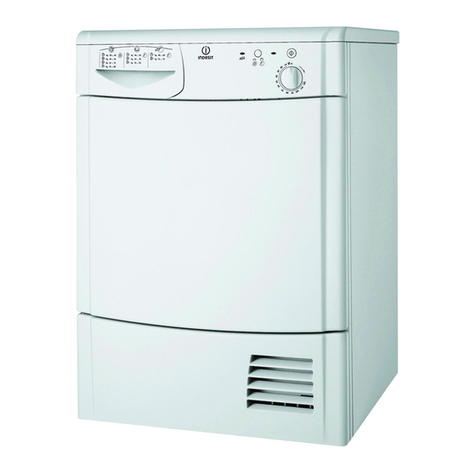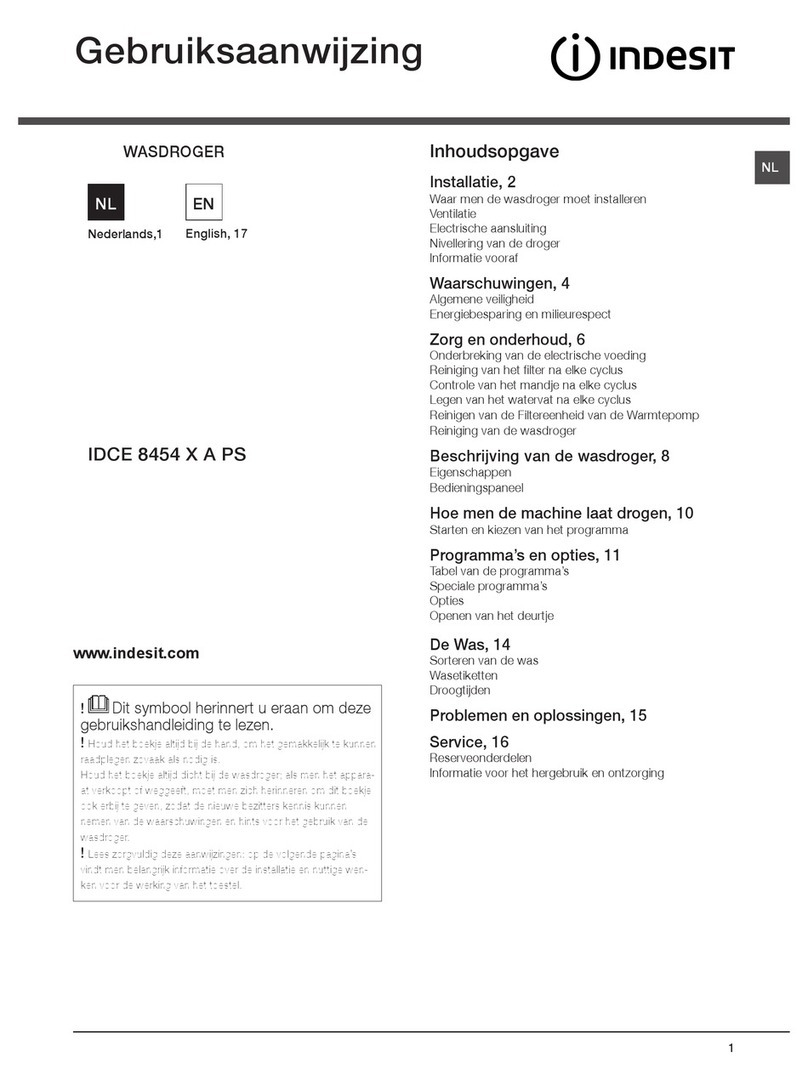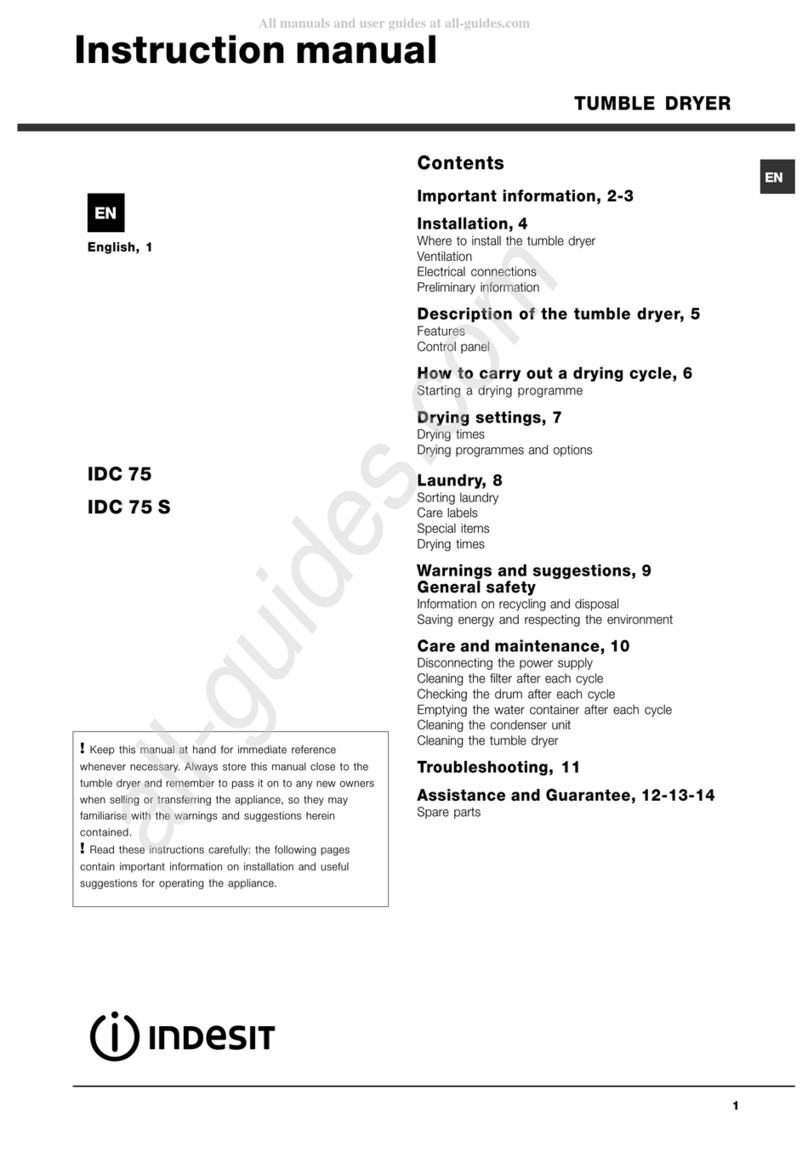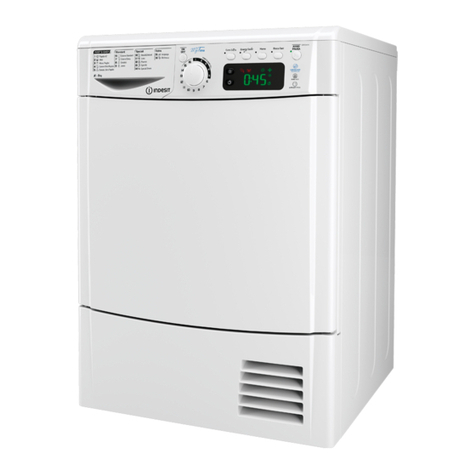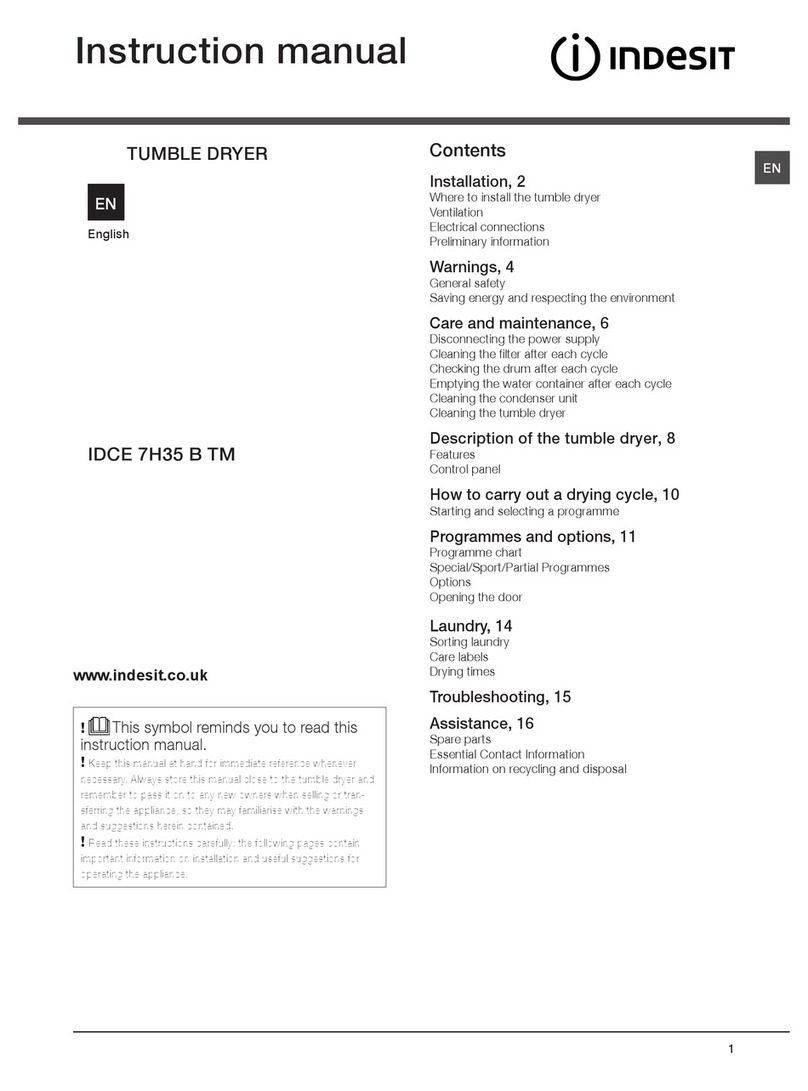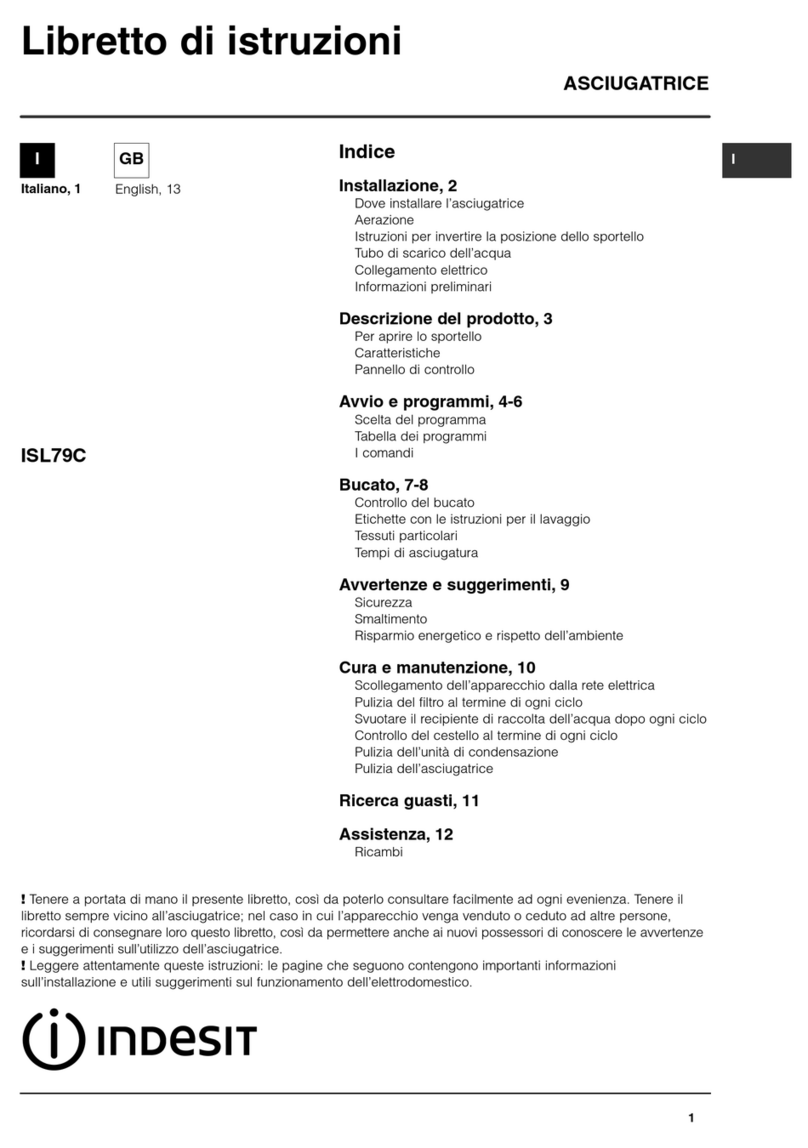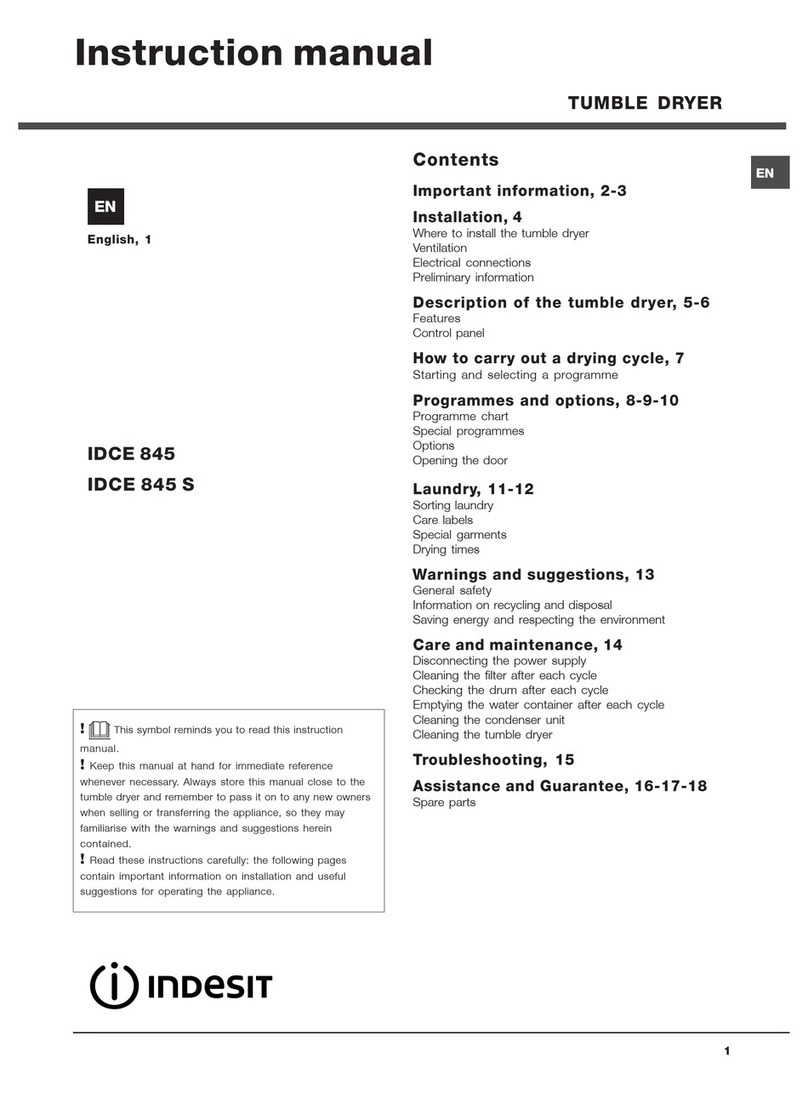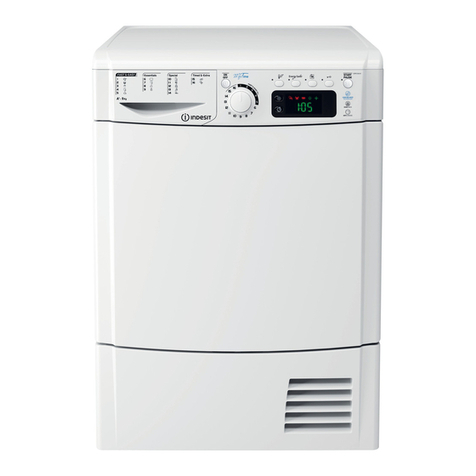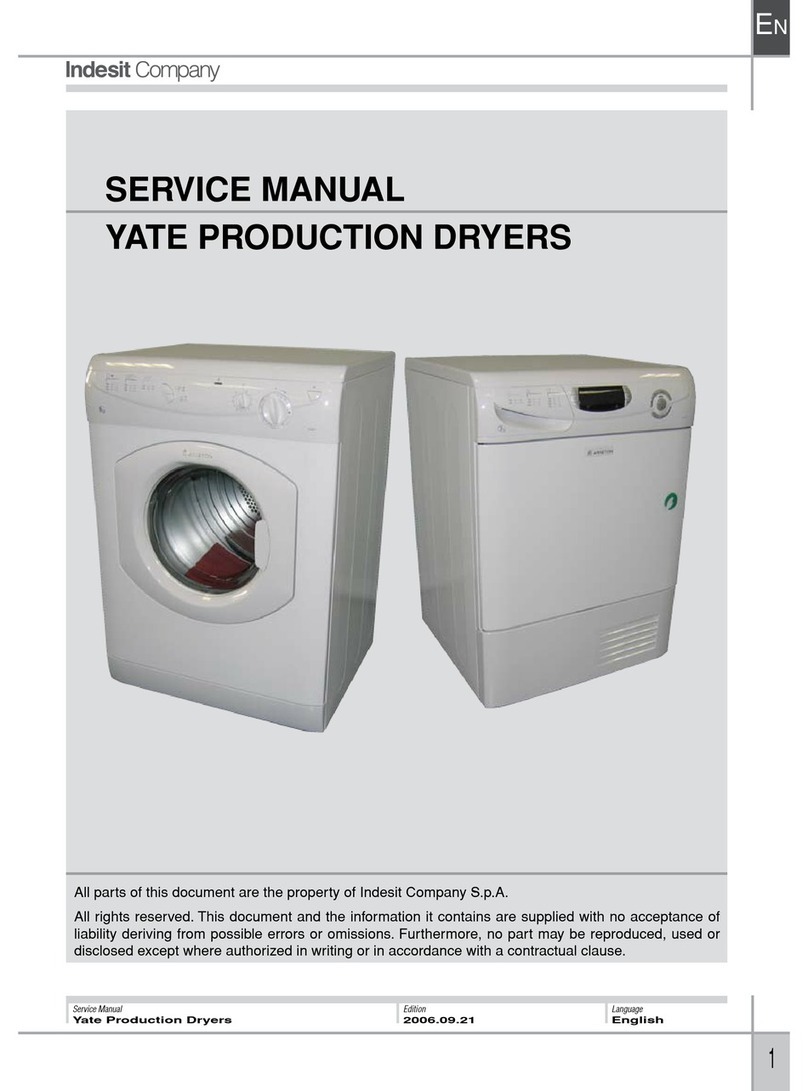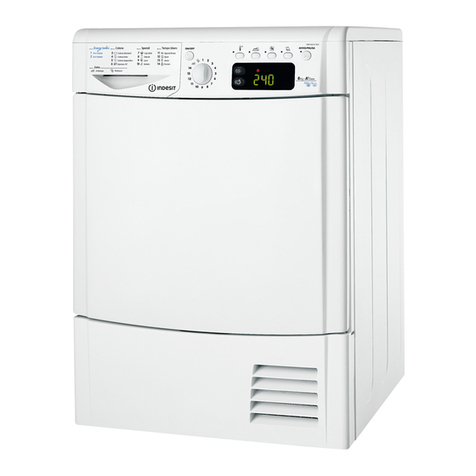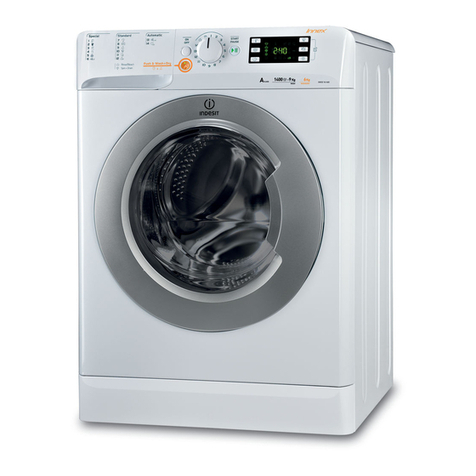EN
9
This appliance as designed and manufactured in
compliance ith current international safety standards. The
follo ing information is provided for safety reasons and
must be read carefully.
General safety
The final part of a tumble dryer cycle occurs ithout heat
(cooling cycle) to ensure that the laundry is not damaged
due to excessive temperatures.
This tumble dryer must not be used by persons (including
children) ith physical, sensory or mental impairments or
ith little experience and kno ledge of the appliance,
unless they are supervised or have been adequately
instructed on its use by the person responsible for their
safety.
This tumble dryer is designed for domestic and non-
professional use.
Do not touch the appliance hile barefoot or ith et
hands or feet.
Unplug the appliance by pulling on the plug, not the cord.
Do not allo children near the appliance hile it is in
function. After use, s itch the appliance off and unplug it.
Keep the appliance door closed to prevent children using
it as a toy.
Children must be supervised to ensure that they do not
play ith the appliance.
The appliance must be correctly installed and receive
adequate ventilation. The air intake on the front part of
the dryer and the air vents on the rear must never be
obstructed (see Installation).
Never use the dryer on carpeting ith high pile as this
may prevent air from entering the dryer from the base.
Check hether the dryer is empty before loading it.
The rear part of the dryer may become very hot:
do not touch it hile the appliance is in function.
Do not use the dryer unless the filter, ater container and
condenser are properly positioned (see Maintenance).
Do not use liquid fabric softener in the dryer; add it to the
final rinse of the ash cycle.
Do not overload the dryer (see Laundry for the ma imum
load sizes).
Do not add items that are dripping et.
Tumble dry items only if they have been ashed ith
ater and detergent, and have been rinsed and put
through a spin cycle. Drying items that have NOT been
ashed ith ater may cause the risk of fire.
Al ays read the instructions on the care label carefully
(see Laundry).
Do not tumble dry items that have been treated ith
chemical products.
Never tumble dry items that are contaminated ith
inflammable substances (cooking oil, acetone, alcohol,
petrol, kerosene, stain removers, turpentine, axes, ax
removers and hairspray), unless they have been ashed
in hot ater ith an extra amount of detergent.
Do not tumble dry rubber, rubber-backed articles and
garments, cushions ith foam rubber padding, latex
foam, rubber, plastic, sho er caps, ater-resistant
fabrics, nappy pants or liners, polyethylene and paper.
Remove all objects from pockets, particularly lighters
(risk of explosion).
Do not tumble dry large, excessively bulky items.
Do not tumble dry acrylic fibres at high temperatures.
Complete each programme ith the relative cold drying
phase.
Do not s itch the tumble dryer off if items that are still
arm are inside it.
Clean the filter after each use (see Care and maintenance).
Empty the ater container and put it back in place after
each use (see Care and maintenance).
Clean the condenser unit regularly (see Care and maintenance).
Do not allo lint to build up around the tumble dryer.
Avoid climbing on the top of the dryer as this may
damage the appliance.
Al ays comply ith electrical regulations and
requirements (see Installation).
Al ays purchase original accessories and spare parts
(see Assistance).
WARNING: Never stop the dryer before the end of the
drying cycle unless all items have been quickly removed and
hung in order to dispel heat.
Information on recycling
and disposal
As part of our continual commitment to ards environmental
protection, e reserve the right to use recycled quality
components to reduce costs for our customers and to
minimise materials astage.
Disposing of the packaging materials: follo local
regulations to allo for recycling of packaging materials.
In order to minimise the risk of injury to children, remove
the door and plug, then cut the po er supply cord flush
ith the appliance. Dispose of these parts separately to
prevent the appliance from being connected to a po er
supply socket.
Disposal of old household appliances
European Directive 2002/96/EC concerning Waste
Electrical and Electronic Equipment (WEEE) states
that household appliances should not be disposed of
using the normal solid urban aste cycle. Exhausted
appliances should be collected separately in order to
optimise the cost of re-using and recycling materials
comprising the machine, hile preventing potential damage
to public health and the environment. The crossed-out
heeled bin symbol appears on all products to remind
o ners of the obligations regarding separate aste
collection.
O ners should contact their local authorities or appliance
dealers for further information concerning the correct
disposal of household appliances.
Saving energy and respecting the
environment
Wring out items before tumble drying them to remove the
maximum amount of ater possible (if they are previously
ashed in a ashing machine, select a spin cycle). This
ensures that energy is saved during tumble drying.
Al ays use the tumble dryer at full load to save energy:
single items and small loads may take longer to dry.
Clean the filter at the end of each cycle to reduce energy
consumption costs (see Care and maintenance).
Warnings
and suggestions

